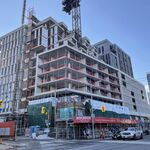sixrings
Senior Member
I think too many people obsess too much over transfers. It's not worth trying to come up with madly expensive, complicated, and operationally difficult schemes just to save a small number of people the indignity of having to make a transfer.
In a grid based system, you will have transfers. It works better that way because it allows for more frequent service.
Regarding this scheme, any track changes will need to be fully grade separated if its to be used in regular service. I don't think any of the track geometry north of Sheppard takes this into account and hopefully never gets changed to allow it.
I too think people obsess over transfers. However in this case the elimination of the transfer makes a long time of sense should since it will save time for the commuter. Without eliminating the transfer people who get on east of yonge on the Sheppard line will continue to use the yonge line because it's simply faster to get downtown. If this is supposed to act like a semi DRL it needs to be as fast as possible.
As for inter lining the subway I don't think it will be too difficult since its almost at the end of the line. What I would assume would happen is that sheppard/university/yonge would became the standard while the Vaughan line would run less frequent. Probably q 2:1 ratio. I can't see this being that complex considering trains already short turn right now. Basically instead of short turning the train might continue in a direction the rider doesn't want. But with notice the rider should easily be able to get off at downsview/sheppard west and East wait for their appropriate train.




